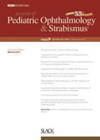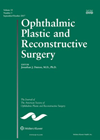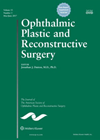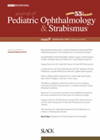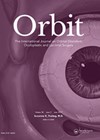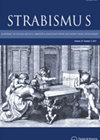You searched for "epiphora"
Childhood canalicular lacerations
This retrospective study over 10 years provides data on canalicular lacerations in patients younger than 18 years of age. Of 137 lacerations, 38 (27.7%) met the inclusion criteria. 68.4% were white and 73.7% were male. The mean age was 10.8...Acute dacryocystic retention
This is a retrospective study of patients with acute dacryocystic retention (ADR). The condition is distinct from infectious dacryocystitis, and is characterised by an acute onset of pain and epiphora associated with a tender but not inflamed lacrimal sac thought...Less extrusion of StopLoss Jones tubes
This is a retrospective comparison of the survival of StopLoss Jones tubes with conventional Lester Jones tubes. Between 2014 and 2016, 31 StopLoss and 59 Lester Jones tubes were inserted. The authors compared the extrusion and sinking-in rates between the...Successful laceration repair with the Mini Monoka stent
The aim of this study was to evaluate demographic data, clinical profile and factors responsible for success of anatomical and functional outcome of canalicular laceration repair with the Mini Monoka stent in children younger than 10 years. This was a...Clinical outcomes of endoscopic dacryocystorhinostomy
The aim of this study was to report the authors’ experience with endoscopic dacryocystorhinostomy (ED) in a paediatric population and to evaluate the effect of surgical site reassessment on anatomy and clinical outcomes. The study included 47 children <18 years...Combination surgical management for congenital lacrimal duct obstruction
The authors aimed to report the clinical outcomes of antegrade balloon dacryocystoplasty (DCP) followed by pushed-type monocanalicular (MC), combined as a primary management for congenital nasolacrimal duct obstruction (CNLDO). This was a retrospective study of 62 eyes (48 patients) with...Lacrimal drainage system malignancies
This retrospective case series looks at the rare cases of lacrimal drainage system malignancies. The authors have identified 14 patients in 24 years, at a tertiary referral centre in the Indian subcontinent. Many previous publications have found squamous cell carcinoma...Causes and outcomes of eyelid lacerations
The purpose of this study was to characterise the epidemiology of paediatric eyelid lacerations, identify risk factors for canalicular involvement and describe postoperative complications after surgical repair. This was a retrospective review of tertiary care trauma centre records in which...2nd Liverpool Nasolacrimal and Orbital Dissection Course
8 September 2025
-9 September 2025
This course is aimed at Otorhinolaryngology (ENT) and Ophthalmology higher surgical trainees (ST5-ST8), senior fellows and consultants looking to improve their understanding and surgical skills in joint ENT/ophthalmology nasolacrimal and orbital surgeries. The aim of this course is to provide...
Iranian prevalence of strabismus and heterophoria
Previous studies in parts of Iran report a childhood prevalence of strabismus of 1.2 to 2.3%. The authors aimed to evaluate the prevalence of strabismus in underserved rural areas of Iran in all age groups. In 2015 they conducted a...Problems in Periorbital Surgery: A Repair Manual
This is a multi-author textbook directed at oculoplastic and plastic surgeons carrying out and managing aesthetic eyelid surgery. The authors are well-known and commonly cite their mentor, Clinton (“Sonny”) McCord as the main inspiration behind the textbook. Each section contains...Bupivicaine injection for Bell’s palsy
1 April 2016
| James Hsuan
|
EYE - Neuro-ophthalmology
This study assesses the use of intramuscular bupivicaine to treat lid retraction and lagophthalmos in facial palsy. It is a prospective non-comparative interventional series of 10 patients with Bell’s palsy (House-Brackman grade IV or V) who each received three serial...

